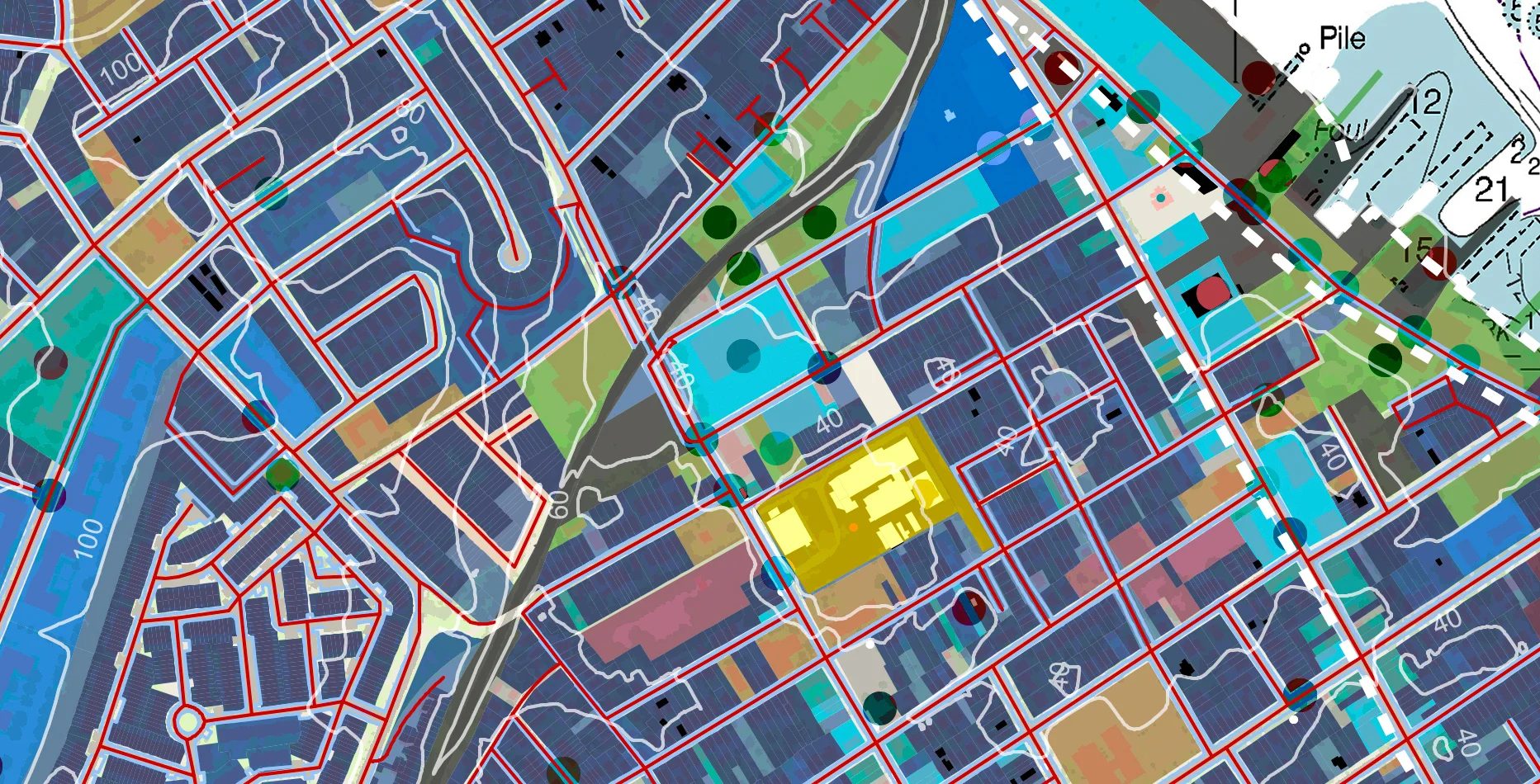Map and Territory: new work by Madeleine Boucher, Robynne Heymans, Jacqui LeBoutillier, and Sarah Toth
Opening March 24, 2017 at Shoestring Studio
Also opening March 24: “Too Late: The European Cannon Is Here” at Shoestring Press
Shoestring Studio is proud to present an exhibition of maps, charting both imagined space and fragmented, distorted real geography.
Privatize the Dream: Project Statement
To us grandchildren of the moon landing, who grew up with dreams of becoming astronauts, the new wave of privately financed space travel is both thrilling and troubling. When riding a rocket becomes an experience you can pay for rather than an honor earned through virtue, will we dream of wealth in place of excellence? Will we still imagine of ourselves as a community joined to aim at the stars? Taking the form of a quilt of hand-dyed, printed, and painted felt, Privatize the Dream draws on legends of the space race, the snuggly tangibility of warm and welcoming sheets, and the anxieties of nationalism, charismatic capitalism, and the lure of the void to provoke a layered reflection on the future of our aspirations and the nation we’ve imagined ourselves to be. What happens when we sell the stuff of our dreams?
The Forgotten Borough: Project Statement
Jacqui LeBoutillier, Robynne Heymans, and Sarah Toth, working detail from The Forgotten Borough, 2017
"This data-driven process reduces the site to a mound of little facts that say almost nothing about the character, mood, or quality of the site."
—Thomas Rainer and Claudia West. “Planting in a Post-Wild World.” 2015
Maps are misleading, overly reductive, particularly when it comes to cities. This series tests this idea by compiling publicly available geospatial data into a collection of dense maps, drawings, and models in the hope to reveal urban complexity. Illegible, hardly recognizable, the results question the limits of mapping and data. Viewing data at a single projection or scale does not truly reveal the character or complexity of place. Staten Island, “The Forgotten Borough,” is a prime example of how reliance on planar representation can distort how community, ecology, and infrastructure interact on the ground.
About the Artists
Madeleine Brehm Boucher is a printmaker and multi-media artist working in Brooklyn, and a founding member of Shoestring Press. Her academic background in Chinese Buddhist art of the medieval period and current work on the big data of contemporary art parallel (or perhaps, propel) her artistic interests. She explores images with sacred resonance through digital-era technologies using stubbornly analog techniques—personal icons from dreams; cosmological maps refracted through Google Earth.
Robynne Heymans is a Masters of Landscape Architecture Candidate at City College of New York. She is interested in landscape; built, wild, forgotten, massive and micro. Fascinated by the influence of the biologic, geologic and anthropologic actors that synthesize to compose the way we move over the earth. Through mapping she hopes to explore the dynamic of data represented and data interpreted. She has been designing and building public and private biotopes for six years. Major influences include Piet Oudolf, John Cage and the Texas hill country. She was born in South Africa, raised in Texas, and currently lives in Brooklyn.
Jacqui LeBoutillier is a landscape architecture student at The City College of New York interested in reimagining the future of cities through the lens of ecology and engaging public interest in stewardship and environmental justice issues through compelling design. She has a background in studio arts and art history, with much of her personal creative practice concerned with realizing imagined, internal landscapes. She is cautiously optimistic about the future of cities.
Sarah Toth is a second year Master of Landscape Architecture candidate at City College's Spitzer School of Architecture. She finds post-industrial landscapes to be compelling in their complexity and challenging in their intersection with the public realm. Her interest in urban systems is complemented by the urge to explore novel and native environments. Last summer she discovered the immensity of the Pacific Northwest's temperate coastal rainforest as a volunteer WOOFer.


